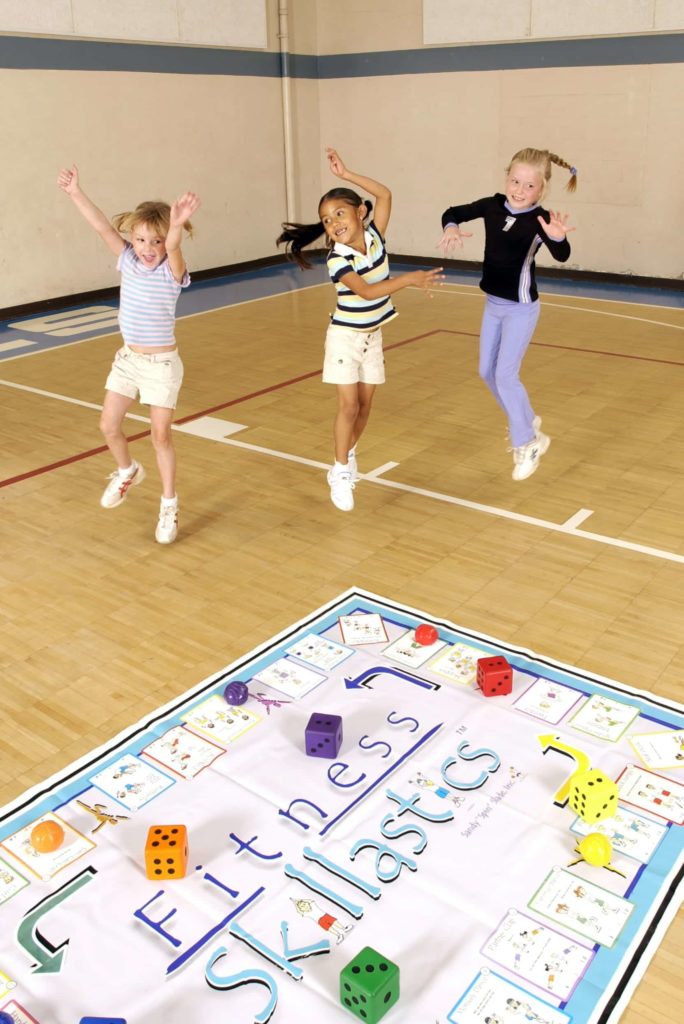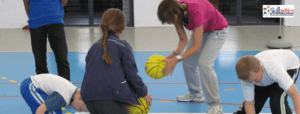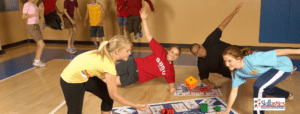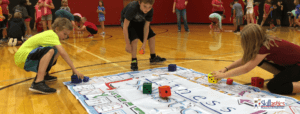Students today experience unparalleled pressure compared to previous generations. The stakes are higher for education and college entrances, a college degree likely won’t be enough preparation for a career, and technology has increased speed and decreased privacy which can be for good but also the bad.
Kids today are under a microscope, held to high standards, and not only expected to outperform their peers but also their past performance. Even kindergarten, when school is supposed to be sweet and fun, has picked up its game. Now, full-day kindergarten combined with much more stringent standards for math, writing, and reading has created a new, more challenging experience.
It all trickles down from the competition for jobs experienced at the end of their academic careers, but that means kids these days push up-hill against academic and life pressures from the very start of school until the finish. It’s hard and arduous, and kids need help. How can we keep students healthy and active so that they succeed in life?
Establish Positive Coping Mechanism
Coping skills for stress are crucial for a successful academic career, but too many children fall into using unhealthy methods. From overeating convenience foods and processed snacks to absorbing themselves in sedentary worlds of too much screen time, kids have options to soothe away the stress that are easy, but often unhealthy.
Children need to recognize the connection between their success and their health. When we choose to exert ourselves and exercise, we create added benefits beyond just weight loss. People who move are more likely to cope with stress better. They will feel stronger because realistically, they are stronger at the biological level, and that will impact their brain. There is a highly identifiable connection between an active lifestyle and improved cognition.
Create The Opportunity To Move
For this generation of children who experience more confined and structured play, they may need to seek out an activity. They may not gravitate to sports or exercise on their own, so it’s best to build in movement and activity within their lifestyle.
For these children, they will benefit from learning skills and ways to be active that they can apply throughout their lives. Instead of choosing a sport to master, children today can learn the fundamental skills required to be active. By breaking down sports into skills, we can provide opportunities to gain the foundation for movement that equip this generation to find and participate in activities throughout life.
Offer Fun and Engaging Options
When kids enjoy themselves while being active, they are more likely to return to the same activity or springboard to another one. The feeling of accomplishment from participating will motivate and inspire more of the same behavior. As they grow, this sense of enjoyment and accomplishment from exercising will grow, too, so it’s essential to instill the joy of exercise as early as possible rather than coerce kids to move.
No one wants to feel forced into exercise or activity. If kids do feel this way, then they usually abandon the project or task as soon as they feel frustrated or unmotivated. The best way to engage children in an activity is to make it fun so that they feel enjoyment. The overarching goal is to promote a healthy lifestyle that inspires children to seek out exercise and movement. Making the development of skills into a fun experience ultimately helps foster the established goal.
Focus Attention Away From Screens
You can get your students to fall in love with the idea and actuality of activity. It requires adults who inspire, motivate, and demonstrate a passion for exercise in such a way that kids see the movement as fun, not fearsome. Children are afraid to fail, and too many children who fear failure will avoid anything that feels too risky. When we break down barriers and create safe places to explore movement, then children will respond.
It’s tough today to break kids out of their comfort zones, primarily the screens that occupy them. Screen time offers safety; when they’re watching television or playing a video game, no one witnesses any failures. We are tasked with convincing these children to learn new skills and take risks in ways that rival the security of a screen.
Adults must provide a level playing field, accessible games, cooperative environments, and consistent reassurance. Having this responsibility can feel like a tall task and may be overwhelming. What can compete against the screens?
Providing programs that exist to build skills using play can break the dependence on screens and create healthy and active students. From the youngest to the oldest child, all children enjoy playing. When you layer in skill development with just enough challenge to keep kids’ interest without intimidating them and provide a supportive environment in which to enjoy movement, then kids finally have a reason to put down their screens.
About the Author
Sandy Slade is the CEO & Founder of Skillastics®, the #1 on-site and virtual physical activity resource for groups of children of all sizes. The on-site programs are designed around Skillatsics Activity Kits. These Activity kits include an innovative technique of play, executed on an oversize mat, where up to 100 children can play at one time.
The virtual programs provide students with an amazing variety of physical activity experiences that consist of 30 days of content lasting 30-40 minutes a day taught by national experts.
Skillastics® is enjoyed by over 10 million students in more than 25,000 Physical Education and After School settings nationwide.
For more information, email info@skillastics.com or check out www.skillastics.com.




